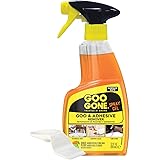Unlocking Profit: Turning Creative Visions into Viable Craft Businesses
The engaging video above showcases a wealth of cool craft ideas and DIY projects, offering a vibrant source of inspiration for anyone looking to make and sell for extra cash. Indeed, transforming creative passion into a revenue stream is an attainable goal for many aspiring entrepreneurs. This comprehensive guide delves deeper, offering the strategic insights needed to transition from merely making crafts to successfully selling them in a competitive market.
Beyond Inspiration: The Craft of Commerce
Many see the beautiful end product, but the true craft lies in the strategic execution of a business model. Crafting for profit isn’t just about artistic skill; it requires understanding market dynamics, production efficiency, and astute commercialization. Think of your handmade items not just as art, but as meticulously engineered products ready for their audience.
Your passion is the spark, but business acumen fuels the fire. Successfully selling crafts means treating your hobby like a small enterprise from day one. You’re not just a maker; you are a designer, a marketer, a production manager, and a financier, all rolled into one.
Identifying Your Niche in the Craft Market
With countless crafts to make and sell, identifying your specific niche is paramount. It’s like being a fisherman with a vast ocean; you need to know which species you’re targeting and where they swim. Your unique value proposition will differentiate your offerings.
Start by aligning your creative strengths with market demand. Research what’s trending, but also consider underserved segments. A crowded market means you need a sharper hook to catch attention.
Consider the competitive landscape. If everyone sells embroidered hoops, what makes yours stand out? Perhaps it’s a specific stitch, a unique theme, or a personalized offering. This focused approach helps define your brand’s identity and attracts your ideal customer.
Mastering Your Craft: Quality & Efficiency for DIY Projects
Quality is the cornerstone of any successful handmade business. Each item you create is an ambassador for your brand. Inconsistent quality is like a leaky bucket; no matter how much water you pour in, you’ll constantly lose it.
Source high-grade materials that resonate with your brand’s ethos and customer expectations. Efficient production processes are equally vital, ensuring you can meet demand without compromising on the meticulous standards your customers expect. Streamlining your workflow, much like an assembly line, allows for greater output without sacrificing the handcrafted touch.
Every cool craft idea must be executed with precision. Invest time in refining your techniques and materials. This dedication prevents costly remakes and strengthens customer trust, paving the way for repeat business and positive word-of-mouth referrals.
Pricing for Profit: Valuing Your Handmade Items
Pricing your crafts correctly is a critical balancing act. You must cover your costs, compensate for your labor, and position yourself competitively in the market. Underpricing undervalues your work and erodes profit margins, while overpricing can deter potential buyers.
Consider all input costs: raw materials, tools, packaging, and even the time spent on marketing. Then, factor in your hourly wage – remember, your time is valuable. Finally, assess the market value and perceived value of similar items. Your price should reflect the true worth of your unique DIY projects and creative efforts.
Think of your pricing strategy as building a strong foundation for a house. If the foundation is weak, the entire structure is unstable. Proper pricing ensures the longevity and profitability of your craft business, allowing you to reinvest and grow.
Building Your Brand: More Than Just a Logo
A strong brand identity transforms a collection of crafts into a cohesive, recognizable entity. Your brand is the story, the feeling, and the promise you deliver with every handmade item. It’s the invisible thread connecting your products to your customers’ desires.
Develop a compelling brand story that communicates your passion and purpose. This narrative, coupled with consistent visual elements like colors, fonts, and photography, creates a memorable experience. Every interaction, from your product packaging to your social media presence, should reinforce your brand’s unique personality.
Building a brand is like cultivating a garden. You plant seeds of identity, nurture them with consistent messaging, and watch as customer loyalty blossoms. It moves beyond merely offering cool craft ideas; it’s about offering an experience.
Channels to Market: Where to Sell Your Creations
Once your crafts are perfected and branded, selecting the right sales channels is crucial. Consider where your target audience shops and how they prefer to interact with small businesses. Diversifying your channels can broaden your reach, much like casting a wider net.
Online marketplaces such as Etsy and Shopify offer global reach with established infrastructures for small businesses. Setting up your own e-commerce site provides complete control over branding and customer experience. Don’t overlook local opportunities either, like craft fairs, pop-up markets, or consignment arrangements with boutiques.
Each channel has its own ecosystem and requires a tailored approach. Understanding the nuances of each platform allows you to optimize your listings and marketing efforts, ensuring your carefully made crafts find their way into eager hands.
Scaling Your Craft Business: Growth Strategies for Extra Cash
As your craft business grows, consider strategies to scale without compromising the handmade essence. Scaling doesn’t always mean mass production; it can involve optimizing processes, expanding product lines, or outsourcing specific tasks. It’s about building a robust engine that can handle more fuel.
Explore complementary products or services that align with your existing offerings. Could you offer workshops, DIY kits, or custom orders? Automate repetitive administrative tasks to free up more time for creation and innovation. Collaboration with other artisans can also open new markets and foster community.
Growth in the craft industry is not a race, but a thoughtful progression. Continuously evaluate your operations, listen to customer feedback, and adapt your strategies. This iterative approach ensures the longevity and sustained profitability of your venture, making your dream of earning extra cash through your creative endeavors a tangible reality.







